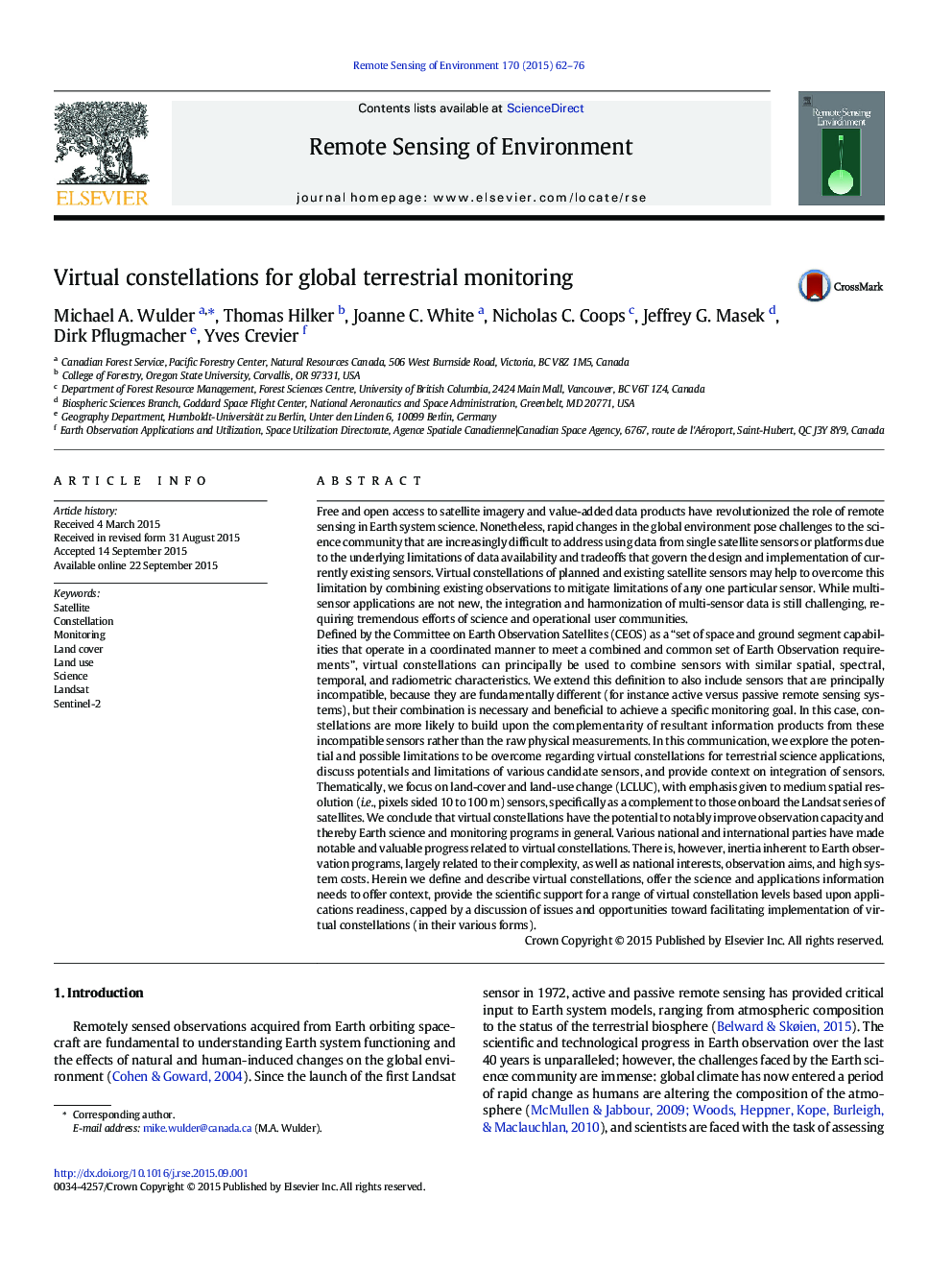| Article ID | Journal | Published Year | Pages | File Type |
|---|---|---|---|---|
| 6345495 | Remote Sensing of Environment | 2015 | 15 Pages |
Abstract
Defined by the Committee on Earth Observation Satellites (CEOS) as a “set of space and ground segment capabilities that operate in a coordinated manner to meet a combined and common set of Earth Observation requirements”, virtual constellations can principally be used to combine sensors with similar spatial, spectral, temporal, and radiometric characteristics. We extend this definition to also include sensors that are principally incompatible, because they are fundamentally different (for instance active versus passive remote sensing systems), but their combination is necessary and beneficial to achieve a specific monitoring goal. In this case, constellations are more likely to build upon the complementarity of resultant information products from these incompatible sensors rather than the raw physical measurements. In this communication, we explore the potential and possible limitations to be overcome regarding virtual constellations for terrestrial science applications, discuss potentials and limitations of various candidate sensors, and provide context on integration of sensors. Thematically, we focus on land-cover and land-use change (LCLUC), with emphasis given to medium spatial resolution (i.e., pixels sided 10 to 100Â m) sensors, specifically as a complement to those onboard the Landsat series of satellites. We conclude that virtual constellations have the potential to notably improve observation capacity and thereby Earth science and monitoring programs in general. Various national and international parties have made notable and valuable progress related to virtual constellations. There is, however, inertia inherent to Earth observation programs, largely related to their complexity, as well as national interests, observation aims, and high system costs. Herein we define and describe virtual constellations, offer the science and applications information needs to offer context, provide the scientific support for a range of virtual constellation levels based upon applications readiness, capped by a discussion of issues and opportunities toward facilitating implementation of virtual constellations (in their various forms).
Related Topics
Physical Sciences and Engineering
Earth and Planetary Sciences
Computers in Earth Sciences
Authors
Michael A. Wulder, Thomas Hilker, Joanne C. White, Nicholas C. Coops, Jeffrey G. Masek, Dirk Pflugmacher, Yves Crevier,
